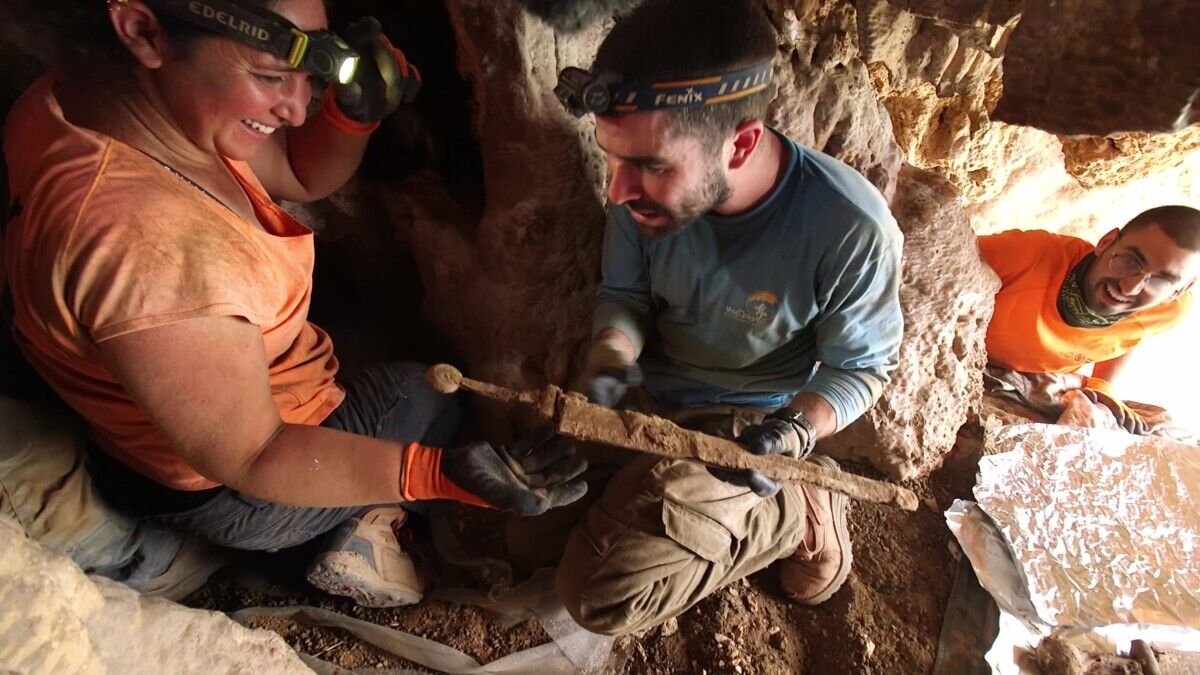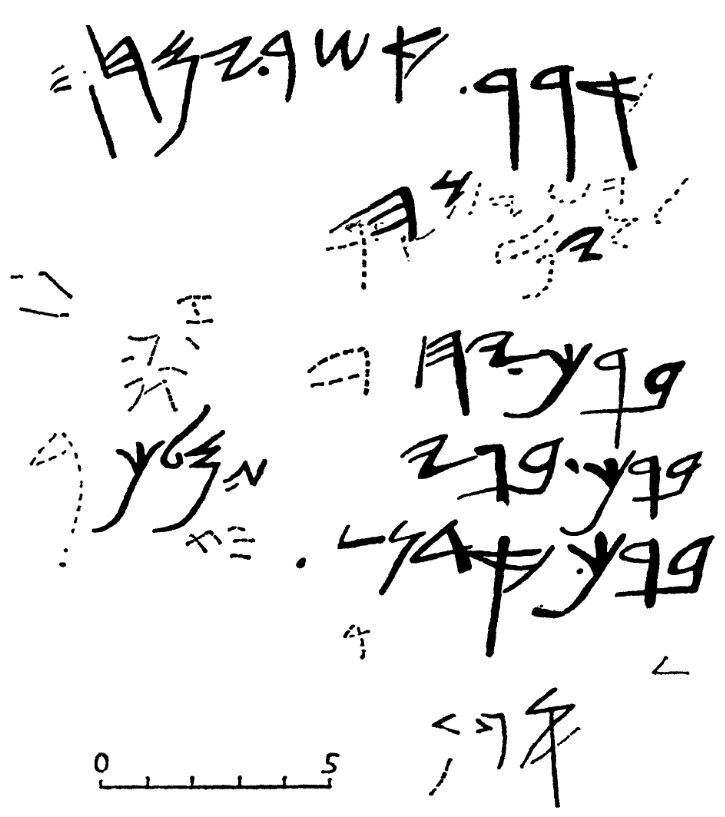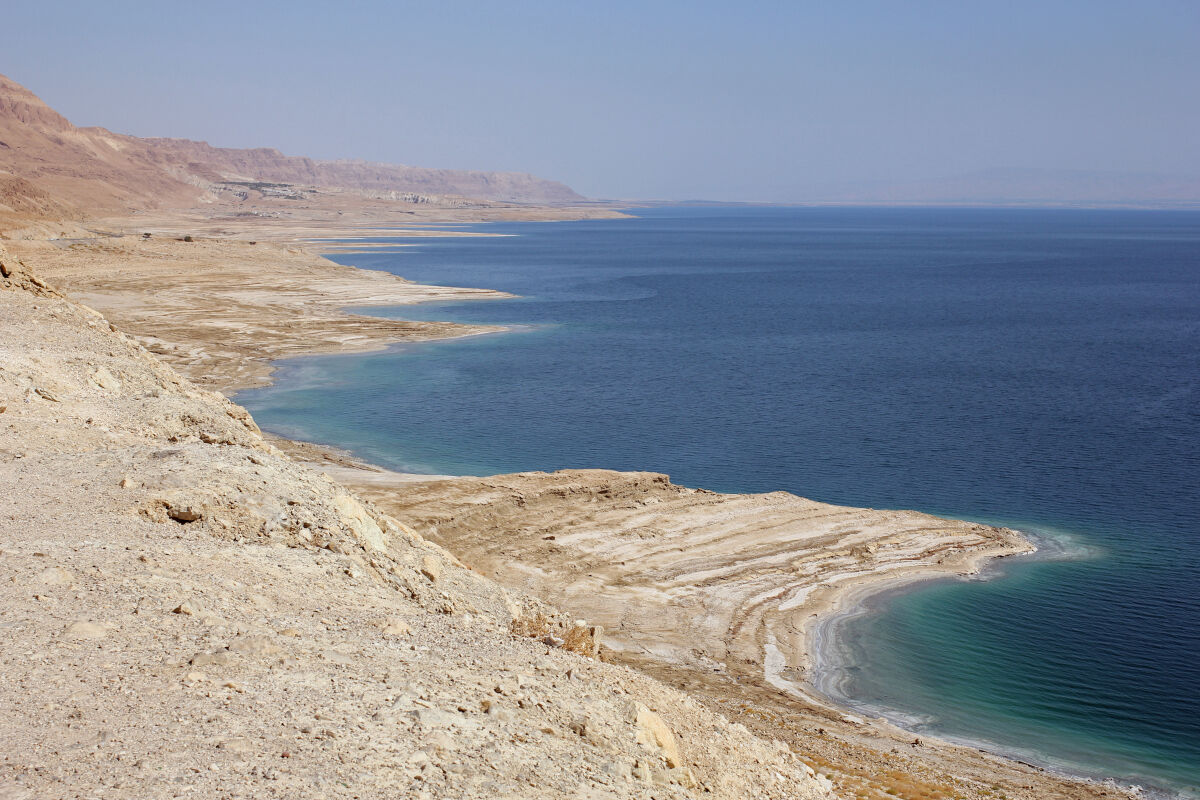Mysterious First Temple Period Cave Inscription Further Deciphered
In September, a dramatic discovery was announced: four, nearly 2,000-year-old swords in a cave overlooking the Dead Sea. The discovery of weapons such as these, and in such an excellent state of preservation, is extremely rare.

Somewhat overshadowed, however, was the reason why the team that found them was there in the first place, a reason that for some—particularly in the realm of biblical archaeology—is much more exciting than the discovery of these much “newer” swords.
The draw to this cave was an attempt to further decipher a mysterious, First Temple Period Hebrew inscription.
Initial Observations

This inscription was first discovered in the cave in March 1973, by En Gedi Field School instructor Ofra Aharoni. Giant stalactites had formed within the cave. On one of the columns, a nine-line inscription was written in black ink. (Cave ink inscriptions of this period are exceptionally rare—typically, such preserved inscriptions are incised, rather than inked.)
The inscription was published in English in 1975 by Polish-born Israeli archaeologist Pessah Bar-Adon in the Israel Exploration Journal. The nine-line, 13-by-16-centimeter inscription was evidently the product of a trained hand and dated palaeographically to the late eighth-early seventh centuries b.c.e. The cursive paleo-Hebrew text was translated as follows:
- Cursed be he who will efface
- ……………….]nh[…………………
- ……………….]yh[…………………
- Blessed be YHW[……………….
- ……………….]wb[………………..
- Blessed be BGY[………..] king
- Blessed be ‘DNY[……………….
- ……………………………………….
- ……………………………………….
In his report, Bar-Adon noted that “Prof. [Benjamin] Mazar has suggested that the writer of the inscription mentions Yahweh [line 4], the king [line 6] and his own master [line 7—the word here begins with adoni, a word that can be used in reference to God or man], in this order, though the name of the master is unknown. Mazar also suggests that those who wrote the cave inscription were influenced by the blessings and the curses in Deuteronomy 27-28.”
Bar-Adon concluded his paper rather quaintly:
Who wrote our inscription? He may have been a refugee seeking shelter in the cave from the wars and invasions so frequent in this period, as has been suggested in the case of other cave inscriptions. However, the fact that he brought with him writing materials—ink and pen or brush—shows in my opinion that his motives were of a more personal nature. He may have been an inhabitant of En Gedi—perhaps a scribe in view of the elegant handwriting—who sought solitude and peace of mind in the cave. While contemplating the primeval landscape spread out before him, he may have been inspired to write words of praise and thanksgiving to the Lord.
The inscription was extremely fragmentary. The majority of the text remained undeciphered.
That was the draw for the recent investigation.

New Text
Ariel University’s Dr. Asaf Gayer was determined to use modern technology to uncover the missing lines of text. By using multi-spectral imaging Gayer and his colleagues—geologist Boaz Langford and Israel Antiquities Authority photographer Shai Halevi—hoped to be able to read more of the lettering from the cave.
After tedious manual imaging, Dr. Gayer submits that part of one of the line’s phrases, previously unknown, reads “in the Valley of Salt.” This terminology for the region is found throughout the biblical account (i.e. 2 Samuel 8:13; 2 Kings 14:7; 1 Chronicles 18:12; 2 Chronicles 25:11; Psalm 60:2—verse 1 in other translations). What’s more, the spelling for “in the valley” found on the stalactite is a particular variant spelling used in the biblical text.
This “Valley of Salt” is a reference to the Dead Sea region. And as Dr. Gayer told the Times of Israel, “having an external source that tells us about the area right above the Dead Sea” is significant. He also appeals to such similar sentiments as Bar-Adon, as to the purpose of the inscription: “Maybe it is in thanksgiving for surviving in this rough region.”

Understandably, news of the sword discovery was presented first and foremost to the public. Additional details regarding the cave inscription itself are awaiting publication in due course. Needless to say, First Temple Period inscriptions are some of the most exciting discoveries in biblical archaeology, and we look forward to more information from Dr. Gayer and his team about this inscription.
We will keep our readers posted!